Exclusive: How pollution from dry cleaners left California sitting on cancer-linked ‘time bombs’
This project was originally published in The San Luis Obispo Tribune with support from our 2023 California Health Equity Fellowship.
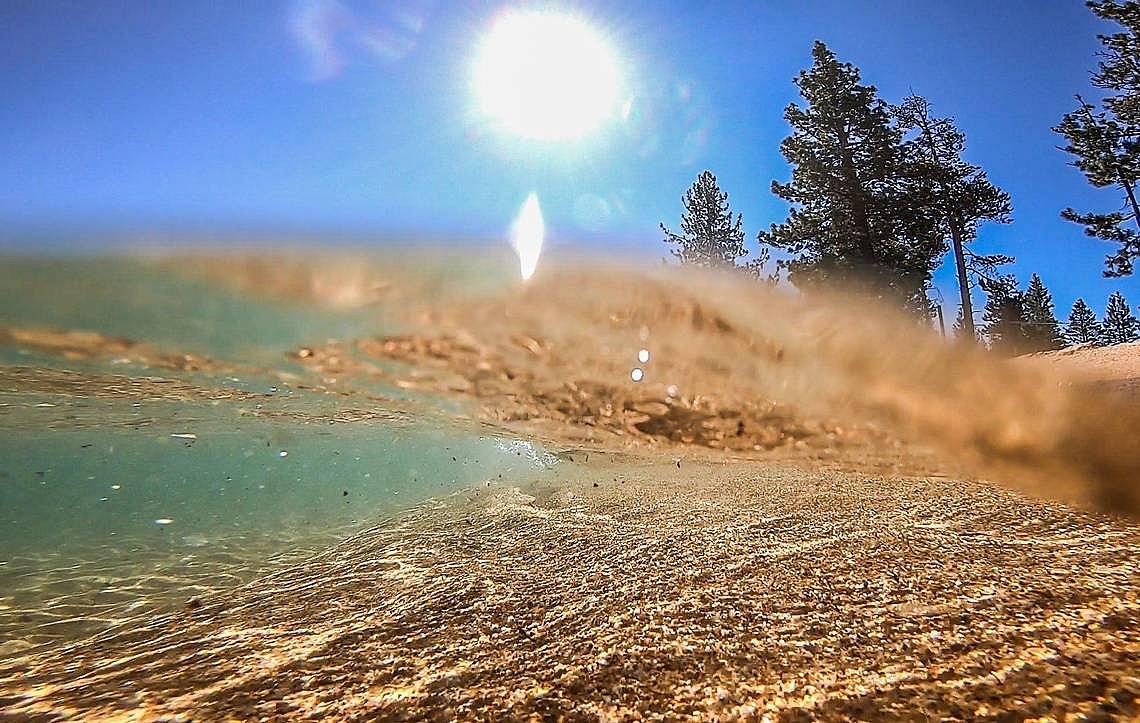
Water laps at the shore at Lake Tahoe’s Pope Beach in July. A dry cleaning company may have polluted some of California’s purest water by discharging perchloroethylene, also known as PCE, the widely used but hazardous dry cleaning solvent.
Hector Amezcua hamezcua@sacbee.com
The deep, crystal blue waters of Lake Tahoe are the iconic centerpiece of one of California’s most famed recreation areas.
A local water provider is among the biggest cheerleaders of the lake’s legendary clarity, boasting this on its website:
“Snow falls in winter, melts in spring and travels through a vast network of groundwater aquifers to Lake Tahoe,” the South Lake Tahoe Public Utility District says. “By pumping water from these aquifers, the South Lake Tahoe area has some of the tastiest and purest water in California.”
But that doesn’t tell the whole story.
Investigations over several years have found that even the “purest” groundwater is not immune to contamination from a carcinogenic chemical long used by a common business operation found in towns and cities across the state: dry cleaners.
Since the 1940s, perchloroethylene, or PCE for short, has been a popular chemical employed in dry cleaning shops across the country.
The liquid is fairly effective at ridding clothes of stubborn stains, but it also easily spreads beyond its intended use, seeping silently beneath the shops and spreading in plumes in the ground below.
That’s because in dry cleaners’ common practice — before better equipment and regulations were developed — the chemical was often dumped down drains or splashed on porous floors.
As a result, over the past 50 years, PCE leaked into the soil and groundwater under the handful of former South Lake Tahoe dry cleaners — and likely thousands of others in California.
In that time, the pollution mixed with the groundwater and eventually spread north toward the great blue lake.
In the South Lake Tahoe groundwater, PCE has been detected at levels more than 1,000 times above the U.S. Environmental Protection Agency’s health limits, according to reports conducted by a consultant for the Lahontan Regional Water Quality Control Board.
Area schools, daycare centers, homes, hospitals and care facilities may be at risk of exposure to the harmful pollution, which can leach into the air, the reports say.
Officials have known about the PCE pollution in the South Lake Tahoe area since 1989, and have for years tried to work with the owners of the now-shuttered dry cleaners to clean it up.
But the efforts at Lake Tahoe and beyond have not gotten far, and now collectively, the pollution poses a multi-billion-dollar problem statewide.
“I don’t think there is an expectation that we’re going to necessarily be able to clean up the aquifer,” said Brian Grey, an engineering geologist with the local water board. “But there are going to be actions conducted that will be protective of human health, and we’ll be able to provide clean drinking water to residents.”

A view of Lake Tahoe from Emerald Bay State Park in South Lake Tahoe in July.
Hector Amezcua hamezcua@sacbee.com
DRY CLEANING CHEMICALS POLLUTED WATER ACROSS CALIFORNIA
Beyond the pure waters of South Lake Tahoe, decades-old pollution from dry cleaners has become a ubiquitous problem that plagues California.
That’s because dry cleaning businesses are a staple in nearly every community: They’re in strip malls, on street corners, in shopping centers, under apartments and in grocery stores.
They largely use chemicals to clean precious prom dresses, work suits, delicate jackets and uniforms.
Up until as recently as last year, PCE was used widely in California dry cleaning operations to launder those clothes.
Since Jan. 1, California has prohibited PCE from being used by dry cleaners — instead encouraging wet cleaning using detergents, or dry cleaning with chemicals considered environmentally friendly.
The U.S. Environmental Protection Agency is now following the state’s lead and preparing to possibly ban the chemical from use in dry cleaners nationwide.
“It’s important to transition away to new chemicals, but also to address all this legacy contamination,” said Jill Johnston, an associate professor of population and public health sciences at the University of Southern California. “Because PCE doesn’t go away, it’ll degrade into other toxic chemicals.”
California is home to at least 7,500 dry cleaning business locations — some in operation for years, others long closed.
It’s estimated that at least 75% of those businesses have created plumes of underground PCE contamination. The plumes can stretch for miles and vaporize from the soil into the indoor air of nearby homes, schools and businesses.
PCE CONTAMINATION EXPLAINED

Illustration by Rachel Handley
Exposure to PCE is associated with higher chances of developing certain cancers, kidney disease, liver disease, reproductive and birth defects, neurotoxicity and other adverse health impacts, according to numerous scientific studies.
The U.S. Environmental Protection Agency has set safe drinking water limits for the chemical at 5 micrograms per liter of water.
NO STUDIES IN CALIFORNIA ON PCE’S IMPACT ON PUBLIC HEALTH
Calculating the totality of PCE’s impact on California’s health is difficult, however, as no large-scale studies have been conducted in the state.
One of the most complete accountings of PCE’s health risks came from Camp Lejeune in North Carolina, where residents and civilian employees who lived or worked there from the 1950s through 1985 were exposed to drinking water contaminated with the chemical.
Studies found that those exposed to PCE were more likely to get kidney cancer, bladder cancer and kidney disease, according to the U.S. Agency for Toxic Substances and Disease Registry.
In another documented case, residents in Cape Cod, Massachusetts, were exposed to PCE in their drinking water in the 1960s. Studies later found that exposure to the chemical led to a plethora of possible health effects.
“When exposed to high levels of PCE in drinking water, residents experienced reproductive health impacts including delayed time-to-pregnancy, increased risk of placental abruptions and an increased risk of congenital malformations,” a 2021 scientific article says. “Babies exposed to high levels of PCE grew up to have reduced performance on neuropsychological tests, increased risk of bipolar disorder, PTSD, illicit drug use, vision problems and certain types of cancer.”
Another epidemiology study found that people living for an average of more than 10 years near a dry cleaner were exposed to PCE in the air at low levels. Those people were found to have reduced cognitive performance on a test of reaction time, vigilance and visual memory, according to the 1995 study.
STATE KNEW ABOUT DANGERS AND SHEER EXTENT OF PCE POLLUTION
California officials have known about the massive extent of the pollution in the state, and its danger to people, since at least the early 1990s.
In 1992, the Central Valley Regional Water Quality Control Board sounded the alarm about the potential extent of the burgeoning problem in its area.
“(PCE), a known carcinogen, has degraded at least 215 wells in the Central Valley of California. … The majority of these wells are large system municipal wells of 200 connections or more,” the board said in its report. “With approximately 285 dry cleaners in just the metropolitan areas of Sacramento, Chico, Lodi, Modesto, Turlock, Stockton and Merced, one would expect that many more wells will be degraded by PCE in the future.”
The report noted that groundwater cleanup was necessary to ensure water supply agencies can provide safe drinking water.
“Deciding who should investigate and clean up groundwater is a complex political/legal issue since the PCE discharges from the dry cleaners were all approved,” the report said. “Because most dry cleaners are small businesses, which may not have the financial capability to define the contamination plume and conduct cleanup, other resources may be needed. A statewide cleanup fund may be appropriate.”
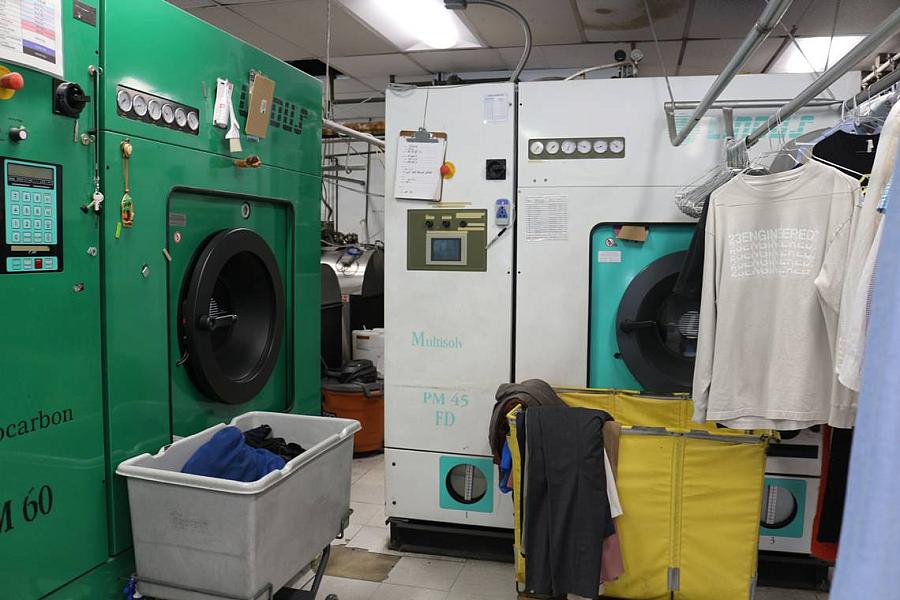
Dry cleaning machines in Hollywood, California.
Mackenzie Shuman mshuman@thetribunenews.com
During the years following the 1992 report, the state worked to phase out PCE use in dry cleaners.
In 2002, a $3- to $12-per-gallon fee was imposed on PCE to fund a program to transition dry cleaners away from the chemical.
In 2007, the California Air Resources Board formally gave dry cleaners in the state 15 years to discontinue their PCE use. The agency gave grants to dry cleaners to purchase alternative equipment and attend training programs.
But there simply hasn’t been solid statewide funding to clean up the decades of pollution that had already accumulated.
DRY CLEANER POLLUTION CLEANUP FUNDS HAVEN’T BEEN ENOUGH
In Senate Bill 158 passed in 2021, the California Department of Toxic Substances Control was allocated $500 million toward cleaning up pollution in disadvantaged communities. Of that, $152 million was put toward investigating PCE contamination from dry cleaners in those communities.
Dry cleaners in non-disadvantaged areas, or areas where neighborhoods are typically less burdened with other pollutants and residents have a higher median income — even if they may have caused pollution — were generally not a part of the funding initiative.
The state water board also has a separate pot of roughly $34 million each year to clean up various chemical pollution plumes throughout California, including petroleum and PCE. The fund is called the Site Cleanup Subaccount Program, established in 2014, and it’s funded through a portion of the 2-cent-per-gallon fee charged to gas stations for petroleum stored in underground storage tanks.
The millions invested in investigating and cleaning up the leftover dry cleaning pollution may seem like a good first step, but it’s far from what the state needs to deal with the massive task ahead.
The state water board has about 700 polluted dry cleaner sites it’s working to clean up and estimates there could be at least 10,000 left, according to Cheryl Prowell, the state water board’s supervisor of underground storage tank and cleanup programs section. Another 325 dry cleaner sites have been classified as “closed” in the water board’s data, meaning the pollution may have been remediated, Prowell added.
“Dry cleaners can be really difficult because they’re often small, family-owned businesses,” said Prowell. “They don’t have a lot of resources.”
Each cleanup — from investigation to remediation — costs an average of $1 million to $10 million.
That puts estimates to clean up all PCE-contaminated dry cleaners in California at anywhere from $7.5 billion to $100 billion, according to calculations from figures sent by the state water board and the Department of Toxic Substances Control.
So, should the state water board maintain its current annual funding available for the dry cleaner cleanups, it could take from 220 to 2,941 years to fund the necessary remediation.
Meanwhile, countless communities across California sit atop dry cleaner pollution plumes.
HOW SOUTH LAKE TAHOE IS DEALING WITH THE POLLUTION
The pollution in South Lake Tahoe is an example of how PCE can be incredibly difficult to address.
The plume spread during the 1970s from just two coin-operated dry cleaners and a car mechanic shop (PCE was commonly used as a degreaser through the 1970s, although typically in weak concentrations compared to the pure PCE used by dry cleaners).
All three businesses stopped operating or using PCE by the 1980s.
Because PCE is heavier than water, the spilled or discarded chemical easily seeps through small cracks in plumbing and floors, trickling down until it meets groundwater or bedrock. Then, it slowly flows and mixes with the groundwater.
The plume under South Lake Tahoe stretches about a mile north toward the lake, which is fed by the underground aquifers and rivers forming from snowmelt in California’s Sierra Nevada Mountains.
As a result of the pollution, the local water purveyor in the area has been forced to shut down some of the wells it uses to supply water to residents and tourists who come for fresh air and recreation on and around Lake Tahoe.
UNDER SOUTH LAKE TAHOE
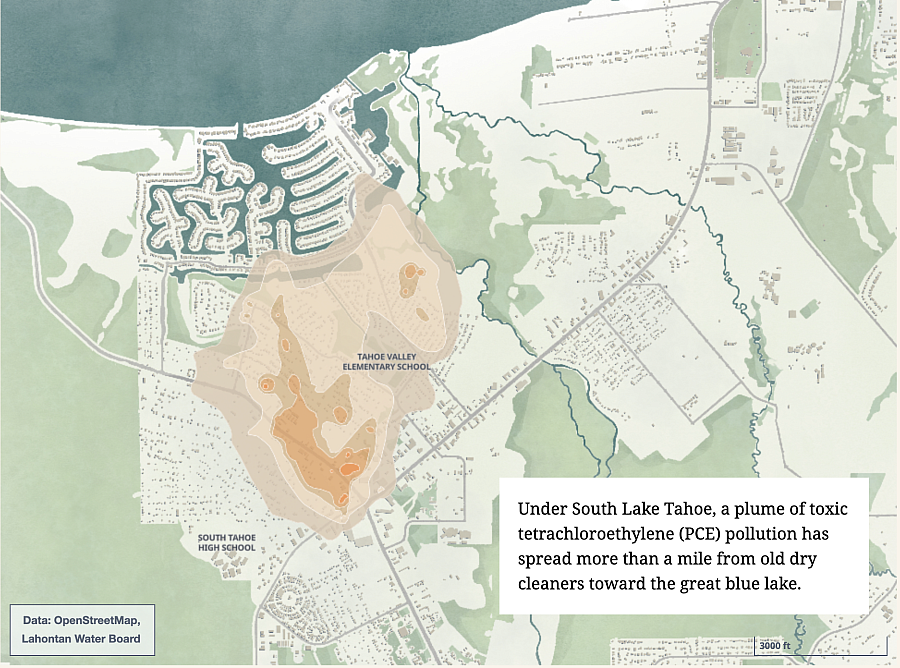
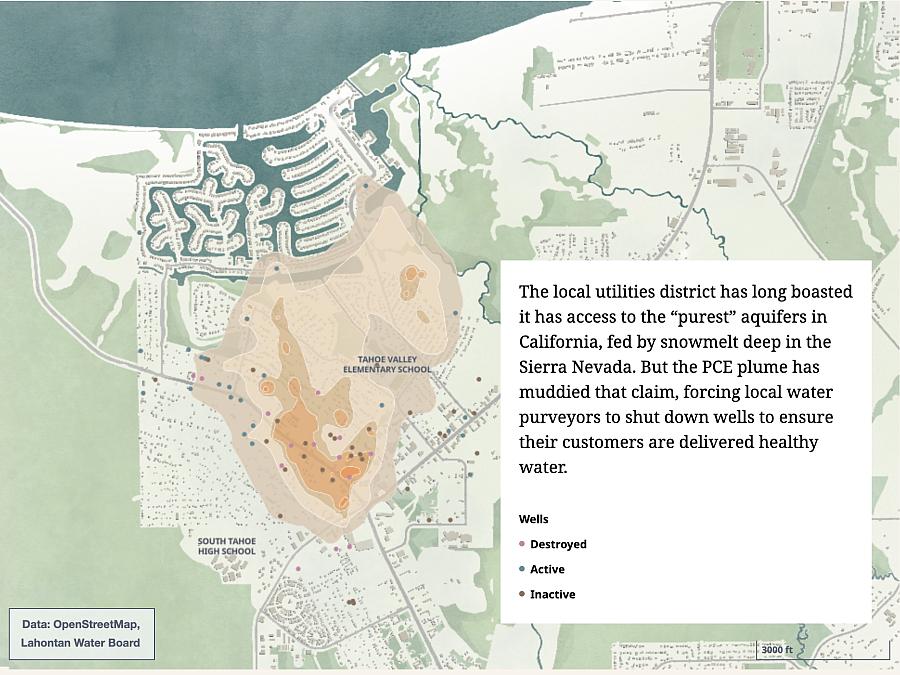

The regional water quality control board has worked for decades with the owners of the dry cleaner properties in an attempt to remediate the pollution. But those owners have since filed lawsuits in state court generally denying their responsibility for creating the plume of toxic pollution.
Meanwhile, the PCE plume doesn’t just sit idly in the soil and groundwater — the chemical goes through a process called volatilization and becomes a gas that can then seep upwards into the air of homes and businesses.
“Previous investigation and remedial efforts have not fully evaluated nor mitigated the threats that the regional PCE plume poses to human health or the environment,” said a 2022 report by AECOM, an environmental consultant hired by the water board to investigate the pollution. “The regional PCE plume continues to pose a potential threat to human health from direct exposure to PCE through ingestion of contaminated groundwater and from the migration of volatilized PCE in soil gas or shallow groundwater into indoor air.”
Officials from the regional water board said that fully cleaning the groundwater and soil is tough, thanks to a lack of funding and because Tahoe’s snowy winters cause the ground to freeze.
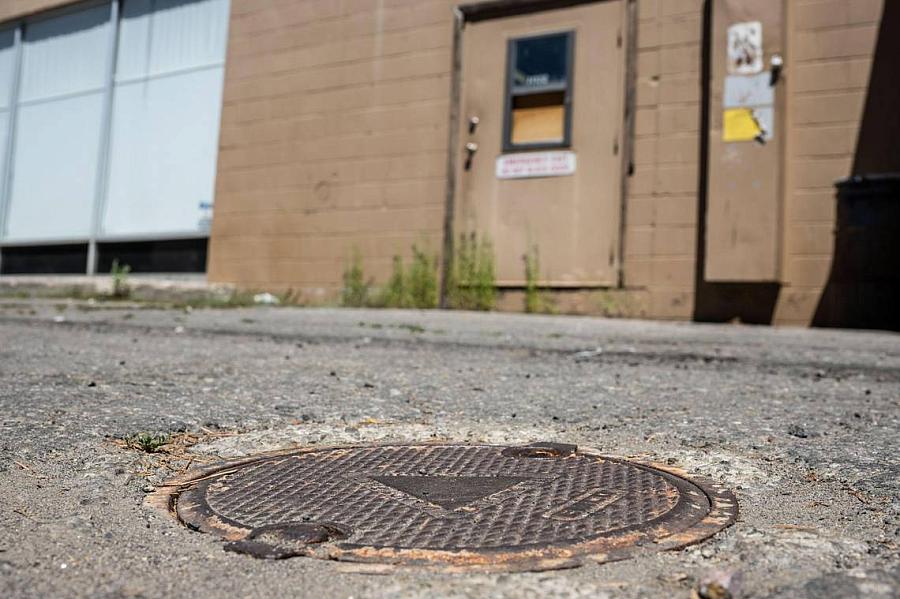
A maintenance hole for a groundwater monitoring well at the site of a former dry cleaning business in South Lake Tahoe.
Hector Amezcua hamezcua@sacbee.com
Efforts conducted over the past two decades at the dry cleaners in South Lake Tahoe include using a soil vapor extraction system to essentially pump the contaminated air in the soil out and clean it. There has also been excavation work done to remove the contaminated soil and dispose of it, according to Grey.
Also during that time some of the contaminated water has been pumped out, cleaned and released to feed purified water into the aquifer, Grey said.
Additionally, the local water purveyor has discontinued the use of some of its wells with high levels of PCE contamination. Two wells still in operation have treatment systems in place to ensure residents do not receive polluted water, according to Grey.
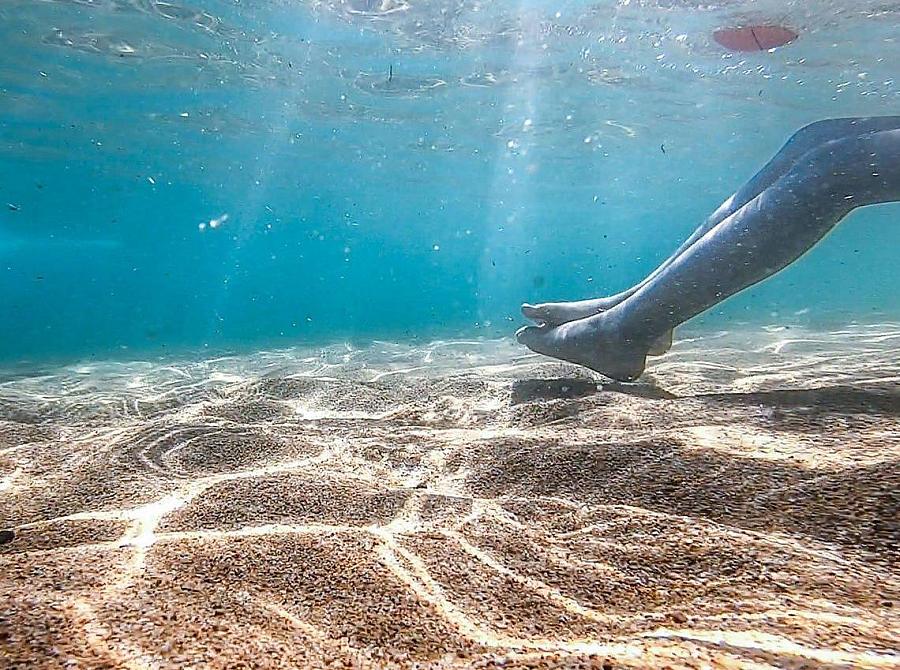
A young swimmer enjoys Lake Tahoe at Pope Beach in July.
Hector Amezcua hamezcua@sacbee.com
“We’re taking this issue very seriously and have been working diligently on this for a long time, because of the threat to human health, which is our utmost priority,” said Ben Letton, assistant executive officer at the Lahontan Regional Water Quality Control Board.
SMALL BUSINESSES CAN’T AFFORD CLEANUP COSTS
Similar, decades-long PCE plume investigations and cleanup efforts have been occurring in locations across the state.
Dry cleaning business owners never intended to pollute, said Ray Rangwala, owner of Esteem Cleaners in Pasadena and a member of the Southern California Cleaners Association.
But in an industry where harsh chemicals are used and no training is required, it’s no surprise that the state now finds itself facing such a pollution catastrophe, he said.
And it’s a catastrophe that’s helping to wipe out the dry cleaning industry.
Many dry cleaning businesses in California are barely holding on as their clientele dwindles.
A shift to remote work during the COVID-19 pandemic obliterated profits, and many dry cleaners have seen sales drop more than 50% with little rebound since the end of lockdowns.
That, coupled with multi-million-dollar PCE cleanups, is ripping away the American dream immigrants such as Rangwala thought they’d earn by establishing a business in the United States.
“If it hasn’t exploded yet, dry cleaners are sitting on ticking time bombs of this pollution they had no idea they were creating,” he said. “And there’s barely anyone there to help you survive the explosion.”

